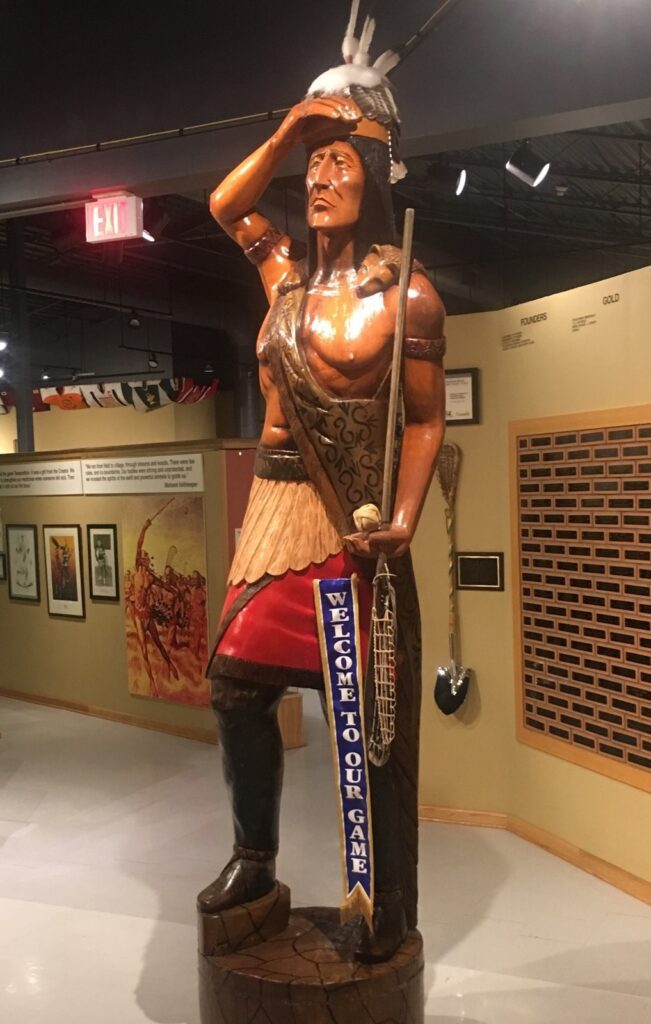Background of the OLHOF & Museum
Indigenous Welcome Statue
The statue is a former cigar store Indian. When Europeans first started to settle North America, the Indigenous people introduced them to tobacco which was for their personal and spiritual purposes. The Europeans used the knowledge gained from the Indigenous peoples and expanded the cultivation of tobacco into a major industry with significant exports back to European countries along with sales to the ever-increasing settlers in North America. Cigar store Indian statues were put in front of stores where tobacco products were sold as a form of advertising. Some statues are still placed in this manner to this day.
To make the statue more relevant to the game of lacrosse, the Niagara wood carvers were engaged to remove the cigar box and existing feathered headdress. The headdress was then reconfigured to represent the headdress of a Mohawk warrior.
Wes Patterson (OLHOF inductee 1998) and member of the Tuscarora First Nation in Lewiston New York created a lacrosse stick and catgut ball to the correct proportions of the statue. The transporting of the single piece statue required a monument moving company.
The final product was discussed and received approval from Indigenous leaders engaged with the OLHOF&M’s development committee..
